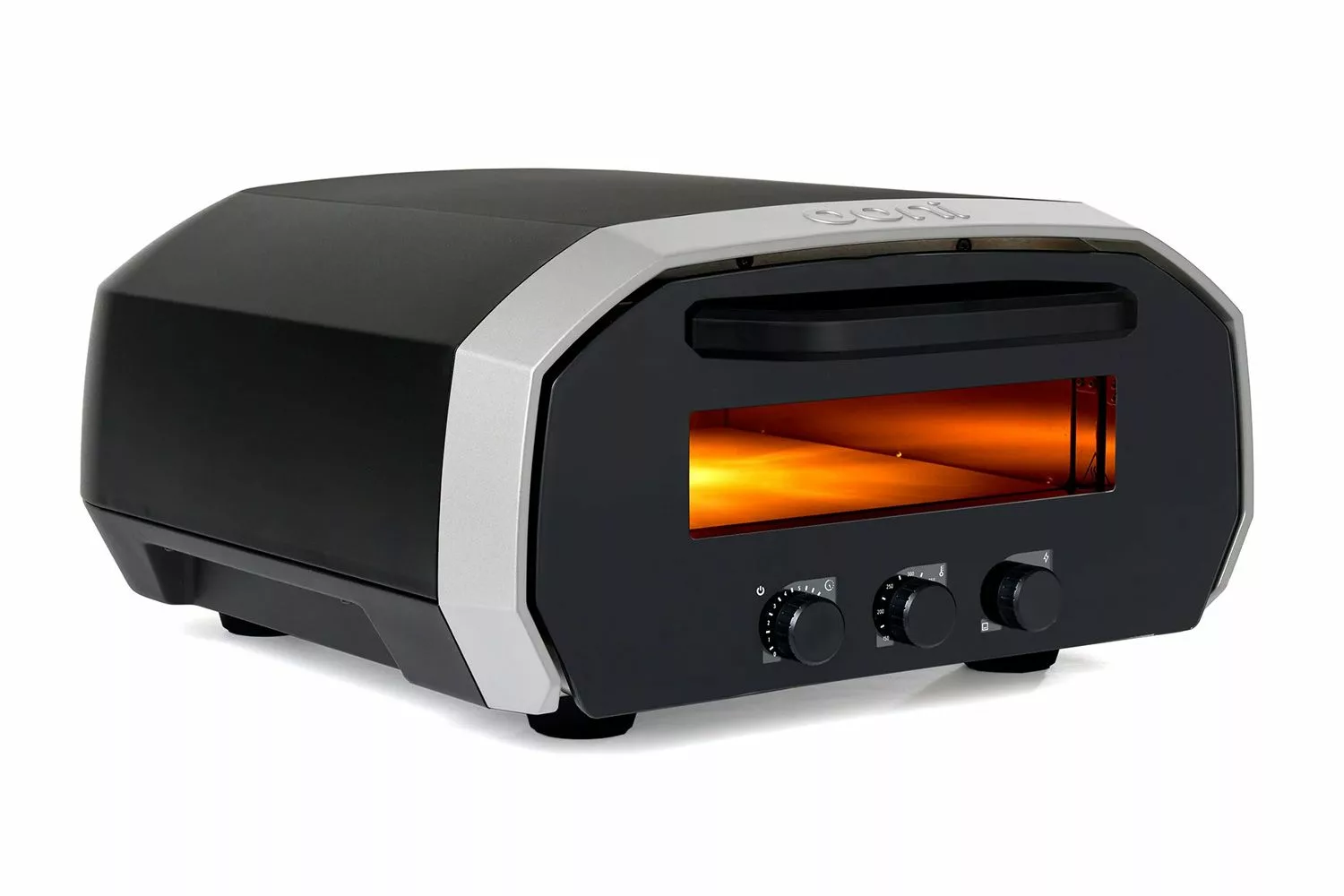We saw it coming. It was inevitable. But even after seeing the launch announcement of Ooni’s first indoor/outdoor electric pizza oven, I couldn’t help but feel absolutely pumped. I feel this way for two reasons:
- This is the first indoor/outdoor oven, making it truly one of the most portable ovens.
- The Ooni Volt is the second (US available) indoor pizza oven that can reach temperatures above 800F (the other being the Breville Pizzaiolo). With such a large company coming into the arena, I have a good feeling that more companies will be entering this space, providing some competition for a healthy market.
And to touch on that first point a bit more, the ability to make a true authentic Neapolitan pizza while indoors is game changing, especially for me living in the Northeast. In this Ooni Volt review, I’ll hands-on test the performance and build quality. Let’s do it.
I buy the majority of the ovens reviewed on this site. And I can use your help.
Leading up to the release, some were worried about electrical requirements for an oven like this. Thankfully, it does not require a 240v outlet and can work off any standard 120v electrical outlet in the US.
This isn’t a glorified toaster oven like many others on the market. With temperatures approaching 900 degrees Fahrenheit and an adjustable dual burner, the Ooni Volt instantly catapults itself to the top of the market. There’s a lot to love about the Ooni Volt 12, but let’s take a closer look at the specs and compare it to some other pizza ovens.
Features & Specs
Max Temperature
The Ooni Volt 12 can reach 850F in just 20 minutes. This is a killer preheat time for a pizza oven. Since this is an electric oven, there’s no need for a chimney or open door to prevent gas buildup or provide airflow. This is how the Volt 12 is able to achieve a quick preheat – it’s basically a sealed up box.
However, 850F is a bit lower than what the best pizza ovens we reviewed are capable of achieving. With that said, I feel a lot of people put a bit too much focus on the max temperature ovens are capable of. Personally, I never launch a pizza when the stone is at 950 – it ends up scorching the bottom too quickly. 850F is a pretty solid stone temperature for launching a Neapolitan pizza.
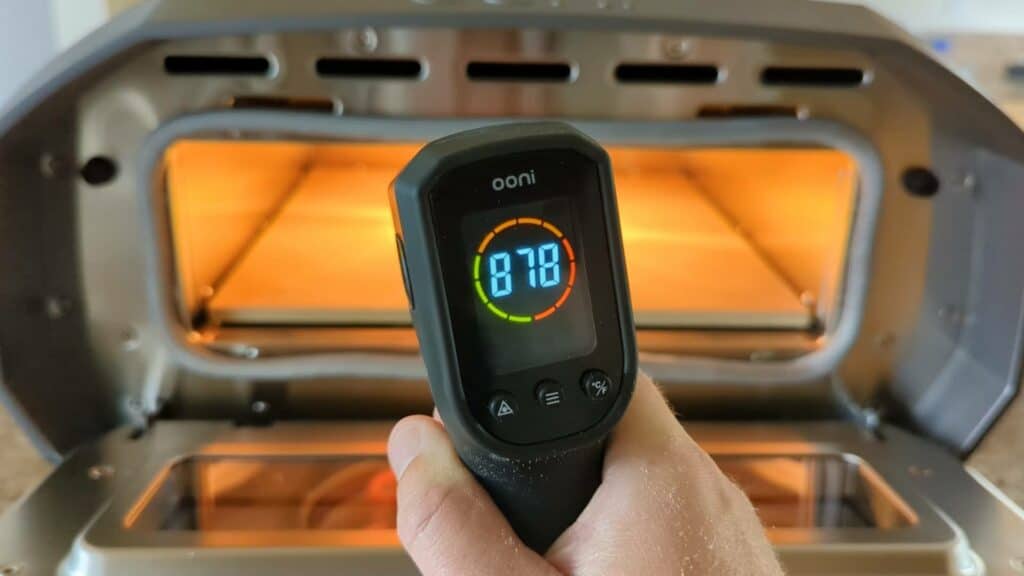
Knowing/measuring the amount of insulation used in pizza ovens is tough without cutting into them, but the fact that this oven weighs 39.2lbs says they must be using a good amount. This is a lot heavier than any other 12″ oven Ooni sells, and only 1lb lighter than the Ooni Koda 16!
Dual Burners
Dual burners in pizza ovens are trendy lately, and for really good reason. Under-stone burners help with getting a pizza oven’s cooking surface up to temperature faster, saving fuel and improving performance for back-to-back pizzas.
The Halo Versa 16 and Carbon pizza oven both have dual burners, but only Carbon has an adjustment dial for each. The Ooni Volt interestingly has only one dial to fine-tune both burners – putting more heat below the stone, above it, or evened out.
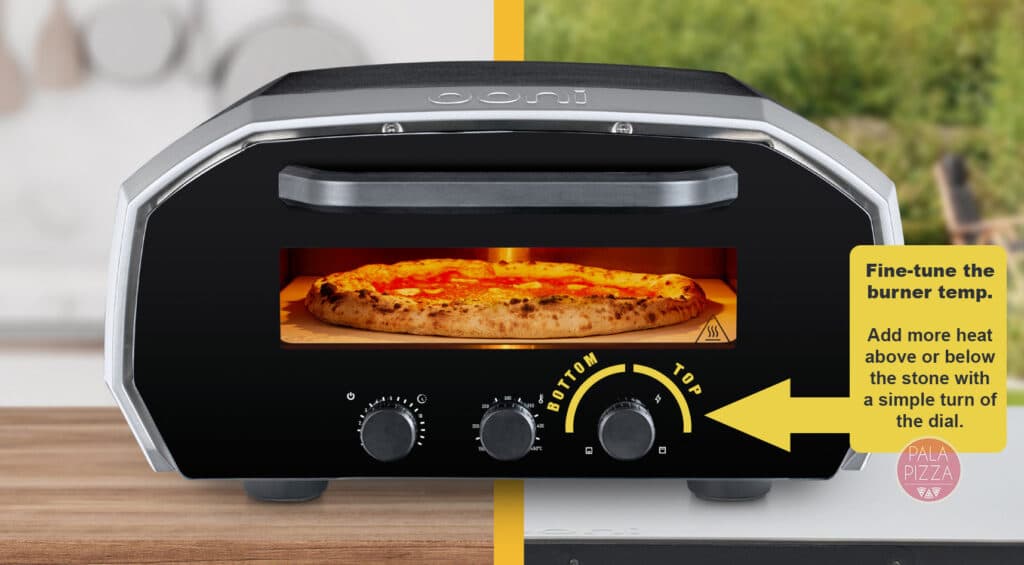
These burners put out a total of 1600 Watts, which is a lot of power. At 120v, that equates to 13.33 amps, which is below the standard 15 amps on most outlets. However, (I’m not an electrician, so this is not advice) I personally wouldn’t want to be running anything else on that circuit.
Boost Function
The boost function is intended to quickly reheat the stone between bakes. It can be activated by turning the aforementioned dial all the way to the left. Once you do this, the “bottom burner” icon will quickly flash for 45 seconds before reverting back to the recommended setting.
It essentially pushes the majority of power to the bottom burner, making the stone temperature rise faster than it would if you used a 50/50 split between the burners. I really like this flexibility in the burners. If you have a pizza with a lot of toppings and need some more heat from the top, just turn the dial to the right.
I can only assume that the max of 45 seconds you’re allowed to put full power on the bottom burner is for a safety reason.
Unboxing and Design
The oven is packed beautifully with the pizza stone on top. This uses the same stone as the 12 inch Fyra and Koda models.
The Volt comes fully assembled; just place the stone inside and plug it in. There is a power switch on the lower right side of the oven that you’ll need to turn on before being able to use the front controls.
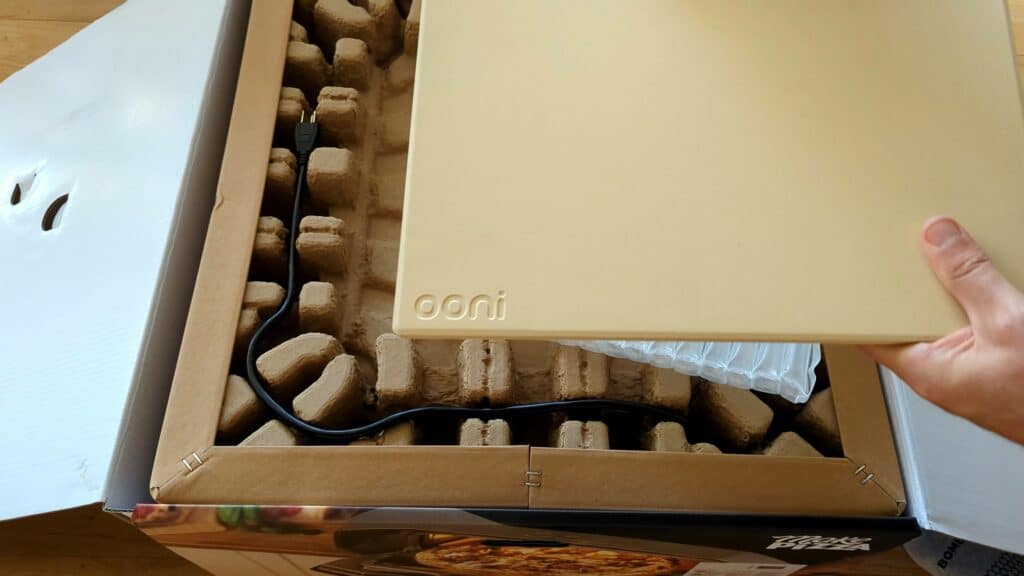
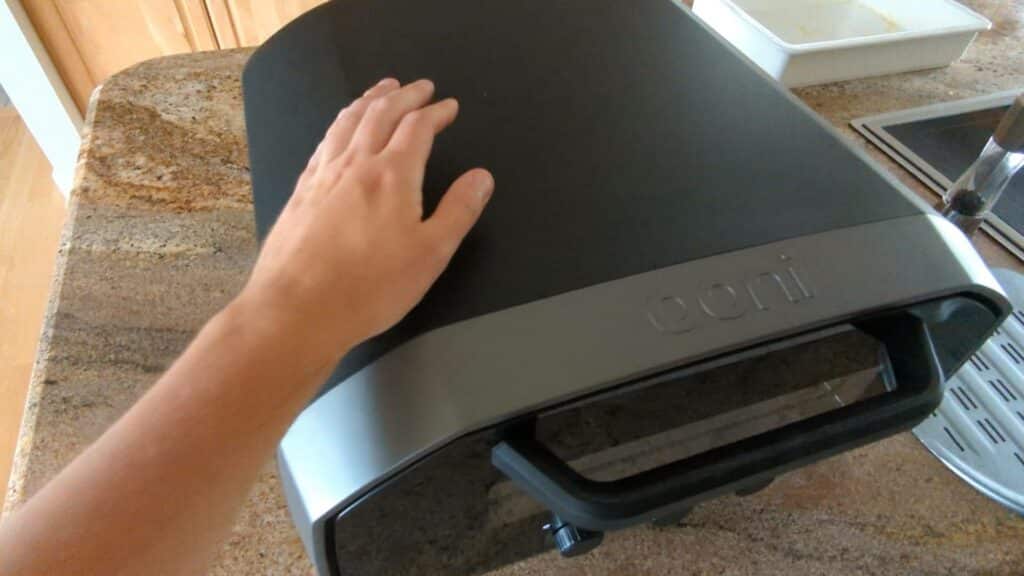
My first impression is that this oven is BIG for being a 12 inch model – but it’s obvious this is due to a thick wall of insulation which keeps it cooler to touch, and therefore much safer. But because of the overall size, I don’t see them coming out with a 16” model.
The Volt 12 is unmistakably “Ooni-fied”, whether you’re a fan of that look or not. I personally really like the powder coated steel shells they use across their newer ovens. It holds up well to the elements, feels a lot more durable, and doesn’t show as much soot.
Moving on to the interface and Ooni made some huge improvements here with some touchscreen power buttons, which also make a little jingle and sequentially light up the rest of the controls.
Inside, you’ll find two burners (one on the floor and one up above), a 1/2″ thick stone (same stone as the Fyra and Karu 12, for replacement purposes), 13″ of cooking space, and bright viewing light to watch pizza-making progress through the glass door.
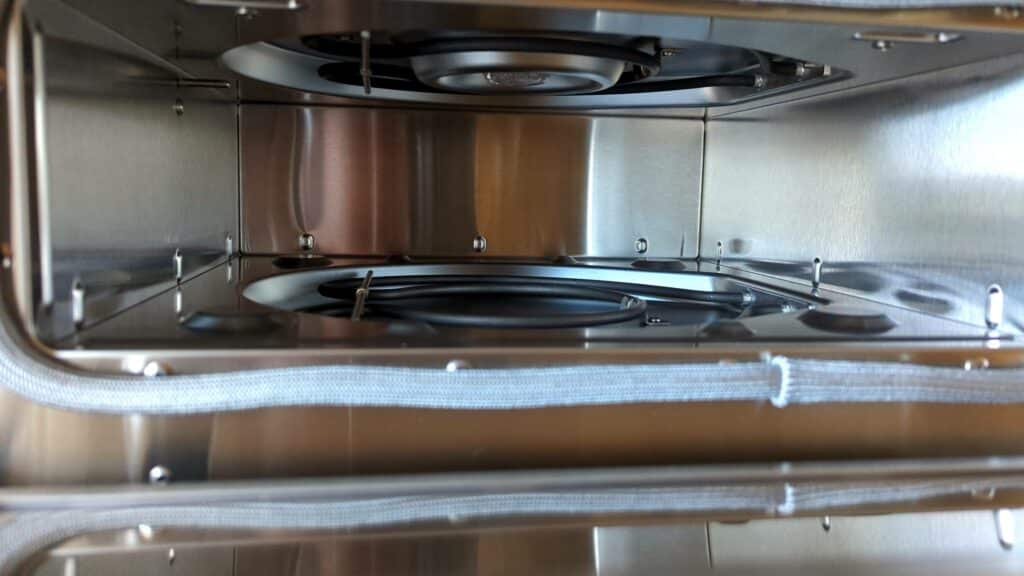
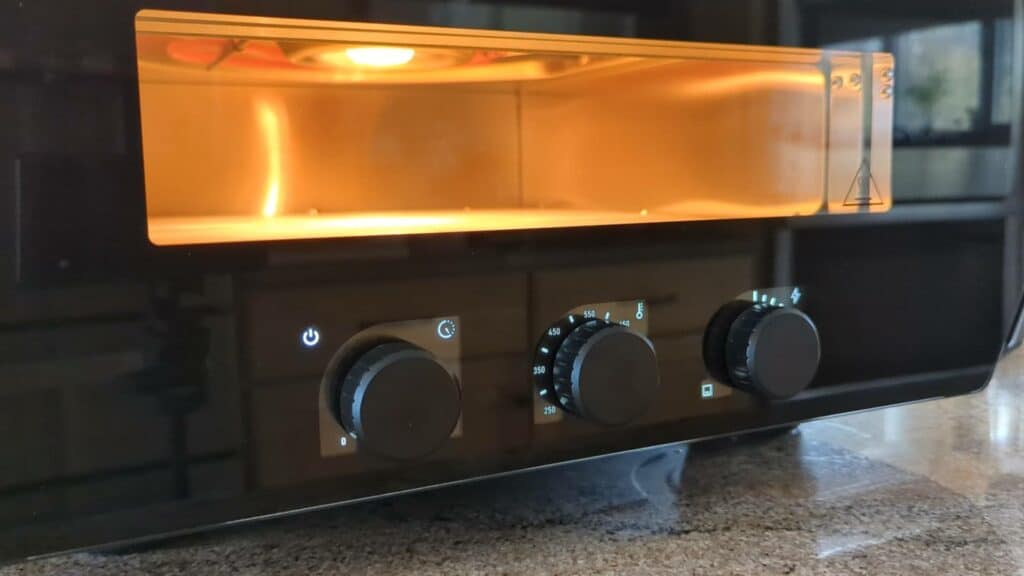
And firing this bad boy up is as easy as you’d guess: the touch of a button. Three knobs control the time, temperature, and burner sensitivity – the latter of which lets you fine-tune more heat up top or down below. I love the feedback on the turn dials, they feel like a really high end car stereo. And music chimes as a temperature is reached or a timer ends. Overall, the build quality is downright impressive.
Performance
Once the preheat is complete, the dial on the right controls how much power to send to the top and bottom burners. I realized that keeping it in the middle is the best for maintaining the set temperature. But if you push more power to the top or bottom burner, the stone temperature increases beyond the set temp.
I buy the majority of the ovens reviewed on this site. And I can use your help.
Neapolitan Test #1
Preheating to the max 850 degrees fahrenheit took just under 20 minutes. After this, I turned the top burner on high while I prepped my pizza, which increased the stone temperature to 887. I launched my pizza and watched the magic happen. The glass door is awesome to watch the crust rise. After a 93 second bake – without turning the pizza at all – this was the result. A really awesome pizza for an indoor oven and my first attempt. The bottom was a bit dark and the top was a tad underdone for my liking, so I turned the burners back to an equal level while I prepped a meatball parm pizza.
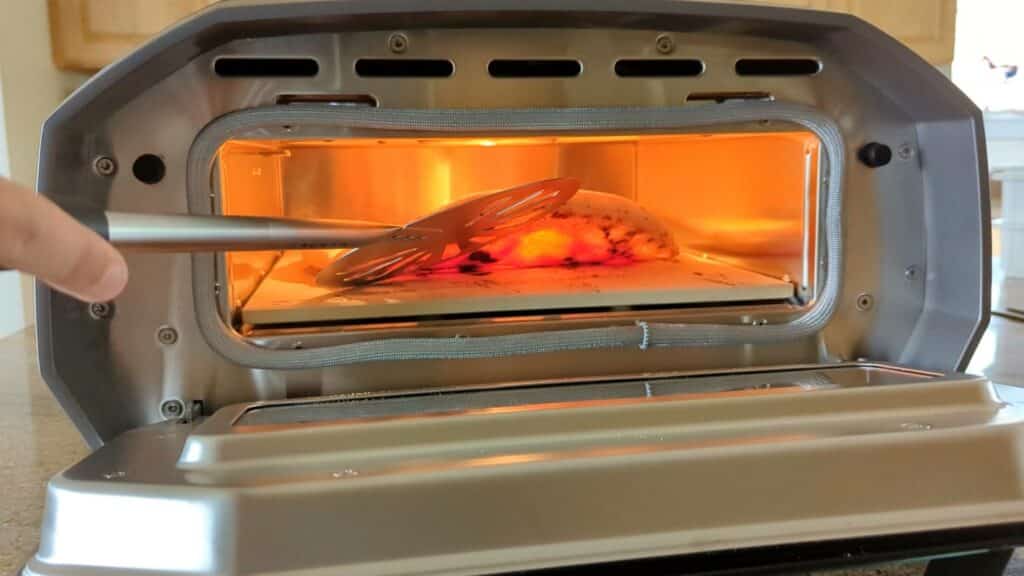
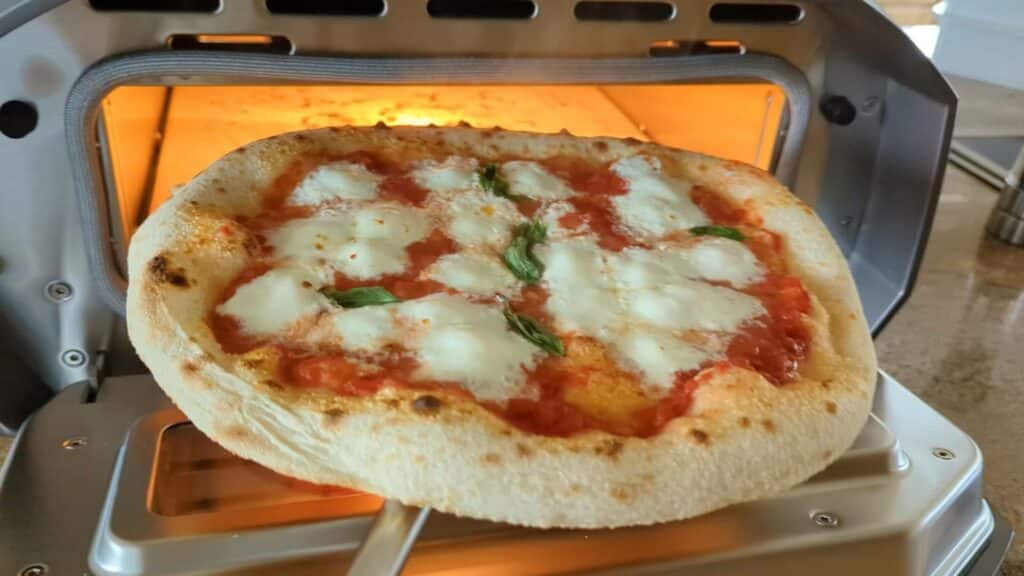
Neapolitan Test #2
Keeping the burners equal results in a more stable temperature, so setting an 850 degree temp will be close to the true stone temp. Then we can put the heat into the top burner after launching.
Halfway through the bake I turned the pizza once, which resulted in a more evenly cooked undercarriage. Much better results this time with more color on top but still a bit dark on the bottom.
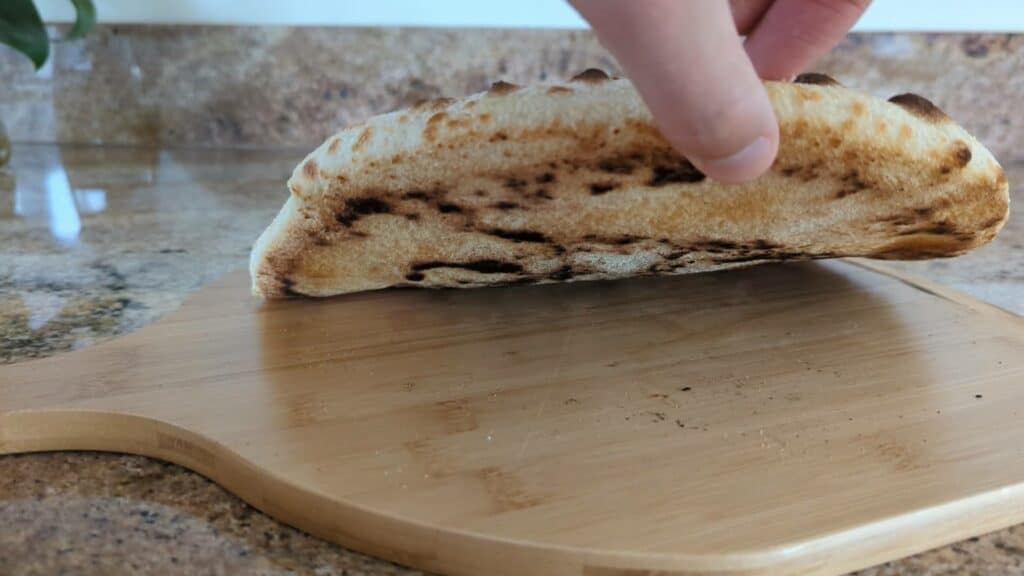

Neapolitan Test #3
So next time I dropped the temperature to 800 and baked the pizza closer to the 2 minute mark. I liked this bake the most. The crust still rose beautifully and obtained nice leoparding, while the bottom was perfect.
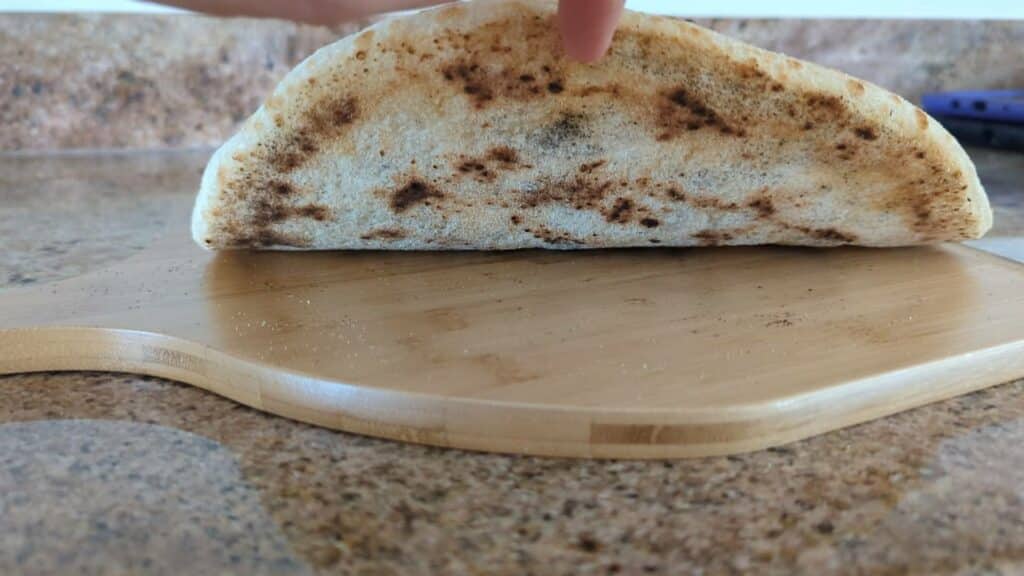

I’m seriously impressed by how well this can make Neapolitans. Before the Volt, you could only make bread flour-based pizzas in most indoor pizza ovens. This is a gamechanger. While it won’t replace my outdoor Ooni’s – I’m incredibly excited to be able to make pizzas like this on rainy days or throughout the winter.
New York Style Test #1
I tried baking my first New York style when the stone temperature read 657 degrees and I used the top burner on high. This was a bit too hot of a bake, burning a few areas on top before the bottom could finish.
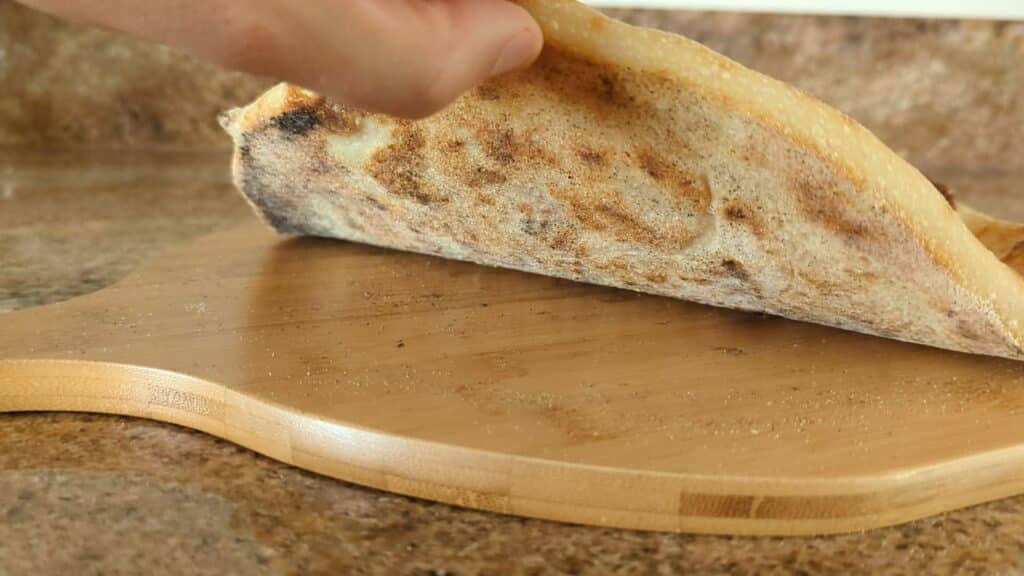
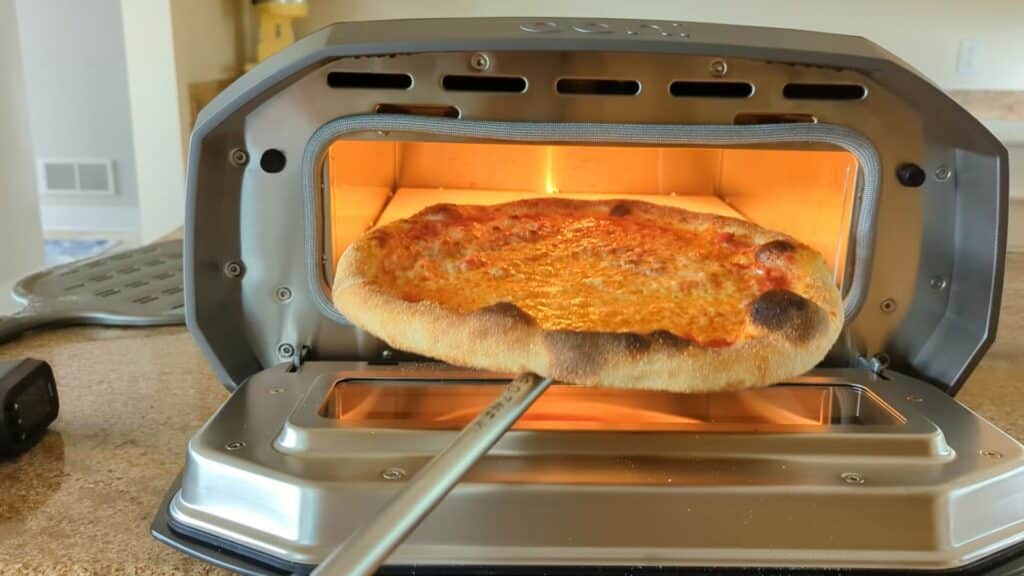
New York Style Test #2
So I dropped the temperature to 550 and put an equal amount of power to each burner. This was a better bake but could still use improvement. You can see here that the bottom is great, and the top of the crust is nicely browned but the edges are a bit underdone.

This can be solved by dropping the temperature even further and going for a slightly longer bake. 500 degrees and a split burner resulted in the best New York.

By the way, there was absolutely no issue with a drop in stone temp between bakes. The under-stone burner does its job well.
Is The Ooni Volt 12 Worth It?
So, who is this oven for? Obviously this oven can make great pizza. But like I said earlier, it won’t replace my Karu 16. The Volt can make really good Neapolitans between the 90 second and 2 minute mark, whereas the Karu 16 can do it quicker. So if you’re a perfectionist that’s looking to make the most authentic Neapolitan as possible, you’ll want to get the Karu.
But if you’re not obsessive about obtaining a 60 second bake, and you like to make a variety of pizza styles and find the indoor aspect a huge bonus, then this is it. You won’t find a better indoor pizza oven. Period.

